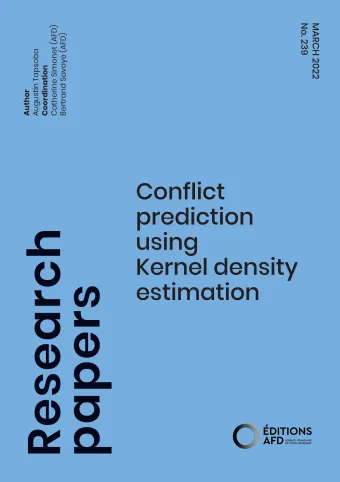Share the page
Conflict prediction using Kernel density estimation
Published on

Being able to assess conflict risk at local level is crucial for preventing political violence or mitigating its consequences. This paper develops a new approach for predicting the timing and location of conflict events from violence history data. It adapts the methodology developed in Tapsoba (2018) for measuring violence risk across space and time to conflict prediction. Violence is modeled as a stochastic process with an unknown underlying distribution. Each conflict event observed on the ground is interpreted as a random realization of this process and its underlying distribution is estimated using kernel density estimation methods in a three-dimensional space. The optimal smoothing parameters are estimated to maximize the likelihood of future conflict events. An illustration of the practical gains (in terms of out-of-sample forecasting performance) of this new methodology compared to standard space-time autoregressive models is shown using data from Côte d’Ivoire.
Useful Information
-
Authors
-
Augustin TAPSOBA
-
Coordinators
-
Catherine SIMONET, Bertrand Savoye
-
Edition
-
239
-
Number of pages
-
43
-
ISSN
-
2492 - 2846
-
Collection
-
Research Papers
